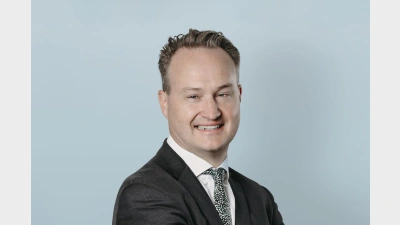Super insourcing trend set to grow


Australian superannuation funds are increasingly looking to insource investment management and the trend is likely to continue, according to new analysis released by BNP Paribas Securities Services.
Asset owners, here and around the globe, are reorganising their operations, reconsidering their investment strategies and reinventing how they obtain returns.
Meeting retirement promises depends on three factors:
- collecting adequate contributions,
- investing them well, and
- doing so efficiently.
The fallout from the financial crisis has weighed heavily on all three. In the context of low interest rates and demanding regulatory requirements, asset owners have to reinvent the way they do business.
One way they are reshaping the way they manage their investment is by moving towards fewer and deeper external manager relationships, according to the latest industry research from BNP Paribas Securities Services and the Economist Intelligence Unit.
The Governance, Cost and Sustainable Investing report also found as asset owners seek to maximise returns and save on cost they are increasingly bringing asset management back in-house.
This trend has already been seen in Australia and the report identified that two-thirds of Australian superannuation funds expect to bring more asset management operations in-house over the next decade.
The current phase of insourcing in Australia has seen largely domestic assets taken in-house. The next phase will see asset owners with their own fund managers located and trading outside of Australia into Asia and Europe. Asset owners also reported that they see some benefits in insourcing fixed income – as yields are so low that every basis point off fees helps.
They are doing this in a formalised way, found the report. For example, one major Australian super fund asked CEM Benchmarking of Canada to look at its options with respect to insourcing. The consultancy found that every 10 per cent of assets taken in-house led to a four-basis-point reduction in costs by removing asset management profit margins from the equation. The next stage was to look at what asset classes could be taken in-house efficiently, looking at costs, ease of implementation and capacity constraints. Equities, direct property and infrastructure headed the list of likely candidates.
Interestingly, the fund also looked at other organisational issues, deciding eventually that back office was a scale game it was not large enough to play.
The report also identified several other trends towards enhanced monitoring. For example, one asset owner noted that “many pension clients would like fewer, but deeper, external manager relationships.”
Longer horizons
In addition, some asset owners are moving away from six-monthly performance reviews. One of the five buffer funds in the Swedish pension system said it had extended its alternative asset horizons from five to 10 years, reducing reliance on monthly and quarterly reporting in illiquid asset classes.
The new role of service providers
As asset owners bring asset management back in house, they are placing different demands on their service providers. Today, they expect service provides to partner with them to provide a scalable operating model with a holistic view of the investment life cycle that encompasses front, middle and back office requirements.
Custodians have a key role to play in helping asset owners boost their data capabilities and build what we call an 'investment office’, with new expertise, systems, governance and processes. This has implications on trading services as well as custody and fund administration, which will need to provide round-the-clock/follow-the-sun services and support.
ESG also driving decisions
Sustainable investing has also become a focus area for asset owners seeking to ensure their investments are aligned with the long-term objectives of their funds. Asset owners interviewed said that the need for improved risk management had been a key driver.
However, despite the great advances in measuring classic financial risks such as market, credit and liquidity risk, measuring sustainability of investments in the long-term remains a challenge. There is still a lack of consensus as to all the relevant ESG factors that should be taken into account. Take carbon emissions for example: there is no consensus on whether indirect emissions should be taken into account or not. In addition, issues remain around determining appropriate data sources and managing data coverage across all asset classes, not just equities. The combination of data, independence, coverage and control, means that many superannuation funds cannot tackle these problems in-house.
Overall, asset owners are reorganising their operations, reconsidering their investment strategies and reinventing how they collaborate. We all need to work together to ensure end investors benefit.
Recommended for you
Economic growth was weaker than expected, once again highlighting an economy largely sustained by population growth and government spending.
In this latest edition, Anna Shelley, CIO at AMP, shares the fund’s approach to current market conditions and where it continues to uncover key opportunities.
The mega fund has announced a $2.2 billion investment in a leading data centre platform, bringing its global real assets portfolio to nearly $60 billion.
In this latest edition, Australian Retirement Trust’s head of global real assets Michael Weaver explains the fund’s approach to finding new opportunities as it surpasses $300 billion in funds under management.













